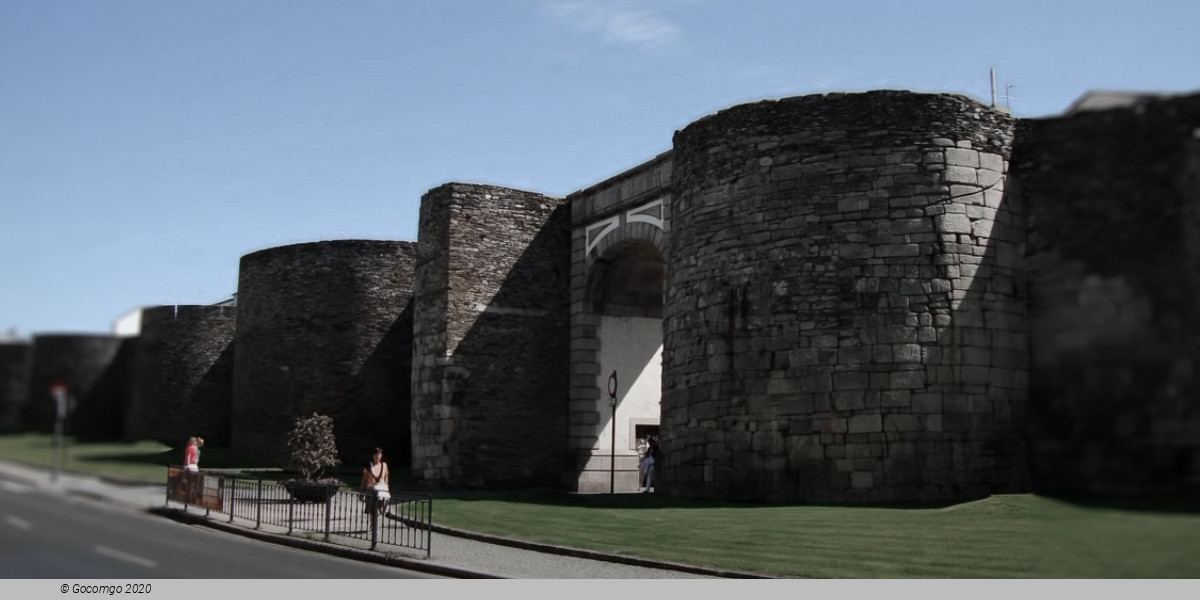Venues in Lugo

Lugo is the only city in the world to be surrounded by completely intact Roman walls, which reach a height of 10 to 15 metres along a 2117 m circuit ringed with 71 towers. The walk along the top is continuous round the circuit, and features ten gates. These 3rd century walls are protected by UNESCO as a World Heritage Site. The bridge over the Minho is essentially of Roman date, though many repairs over the centuries have effaced its Roman character.
Other sources suggest that the name Lucus Augusti comes from the Latin word Lucus, which means "sacred grove", or "sacred forest", as the city was founded on the place of a small grove.
Besides the walls, sights include:
- the Cathedral, dedicated to St. Mary, built about 1129, though the actual main façade and towers date only from 1769. Its elegant stalls were carved by Francisco Mouro in 1624. This cathedral enjoys the privilege of having the Blessed Sacrament perpetually exposed, a fact commemorated in the armorial bearings of the town.
- Convent and church of St. Francis, in Gothic style, with remains of the sober cloister. It currently houses the Museo Provincial, which shows a display of Galician art and other building of the 18th century
- Church of St. Dominic
- City Hall (Casa do Concello in Galician), a large Baroque structure with a mid-18th century façade. Annexed is a clock tower, originally from the 16th century, but rebuilt later.
- Palace of the arts (Círculo das Artes)
- The Roman Bridge over river Minho.
- Rosalía de Castro Park, a 23 ha park in the city center. It has a small pond in the middle and contains many species of trees, like three sequoias.
- Museo Interactivo de Historia de Lugo (MIHL), an interactive museum about the history of the city, made by Nieto sobejano arquitectos.
- Two important festivals take place in Lugo:
- Saint Froilan festivity, which lasts from 4–12 October, dedicated to the city's patron saint. It's a Fiesta of National Tourist Interest and it's very popular to eat polbo á feira in one of the many stands near Rosalía de Castro park.
- Arde Lucus, festival celebrated in the last weeks of June which revives the Roman and castro past of the city, and which emerged to commemorate the declaration of the city's Roman wall as a World Heritage Site in 2000. In its latest editions it has reached nearly half a million visitors.
...Read more
...Less detail
Venues in Lugo (1)
Piazza dei Martiri 1
The architectonic and urban heritage of Lugo goes back to the 18th century, a time of great cultural vivacity and economic development for the city.


